
- Date
- 29th July 2021
- Categories
By Will Coley (University of Strathclyde) and Joni Cook (Loughborough University).
It is widely acknowledged that rapidly accelerating the global transition to modern energy cooking services is critical for alleviating multiple negative health, environmental and gender impacts of traditional cooking practices using biomass. A growing body of evidence (such as this ESMAP report) is showing that, in many settings, modern energy cooking services such as electric cooking are already cost-effective alternatives. Cooking with electricity is not only cost-effective, but also has tremendous potential for scale up if integrated into energy planning and policy. As Paul Mbuthi, Deputy Director of Renewable Energy at the Ministry of Energy of Kenya, stated in his opening remarks at the UN Ministerial-level Thematic Forums side event on clean cooking held on 23 June 2021, “The integration of clean cooking into electrification planning would strengthen the profitability of decentralised and centralised grids and provide significant social, economic, health and environment co-benefits”. But how can we identify where the greatest opportunities and challenges for a scale up of electric cooking lie? A project, led by the University of Strathclyde MECS team, addressed this challenge by conducting a Global Market Assessment (GMA) for electric cooking. A report detailing the findings of this project has just been released.
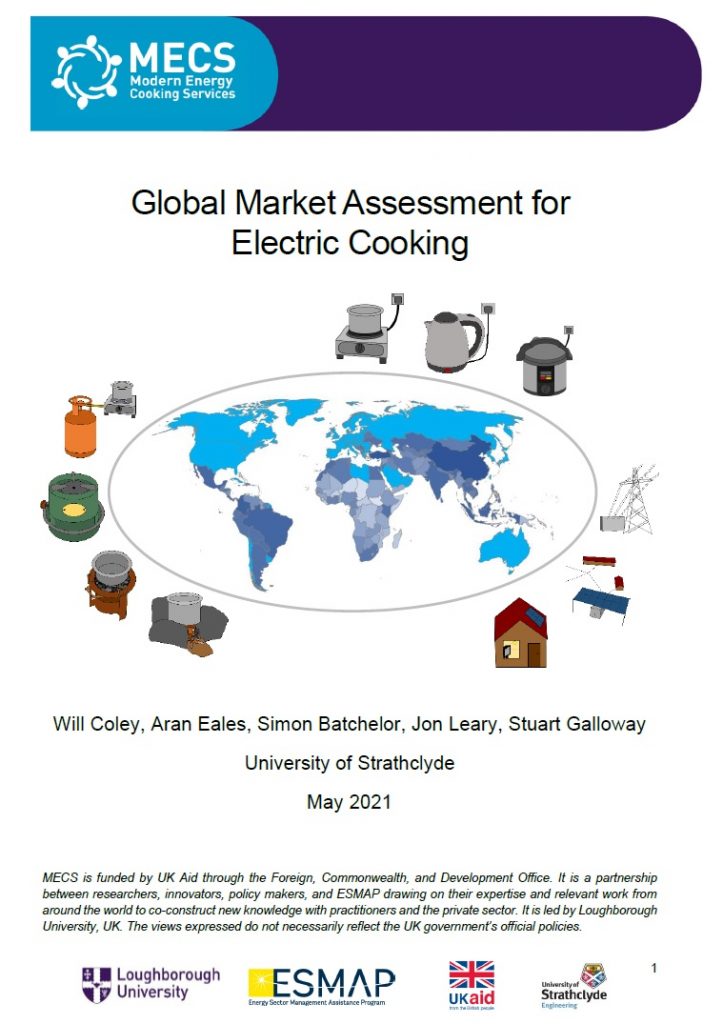
The GMA has drawn on the experience of a range of stakeholders to identify the key factors which influence the viability of a scale up of electric cooking. Where possible, these factors have been represented by publicly available datasets, weighted as to their relative importance and combined into a score for 130 countries in the Global South. As electric cooking relies on electricity which can be supplied in a variety of different ways, the GMA provides a score for the viability of scaling up national grid, mini-grid and off-grid (standalone) supported electric cooking.
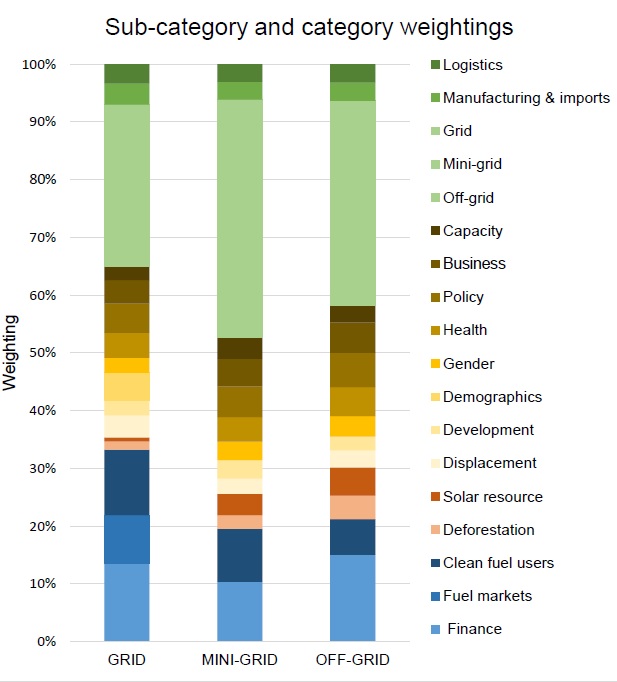
Based on the assessment, the GMA offers the following key findings:
- Energy infrastructure and human development are key enabling factors for scaling up electric cooking. There are groups of key indicators which enable a strong GMA score and which are broadly similar across national grid, mini-grid and off-grid scenarios. Indicators such as the strength of electricity infrastructure and clean cooking market, coined “energy” enablers, have a particularly strong influence; while “development” enablers such as human development, gender inequality, ICT adoption, logistics and business indices also influence the GMA score but to a lesser extent.
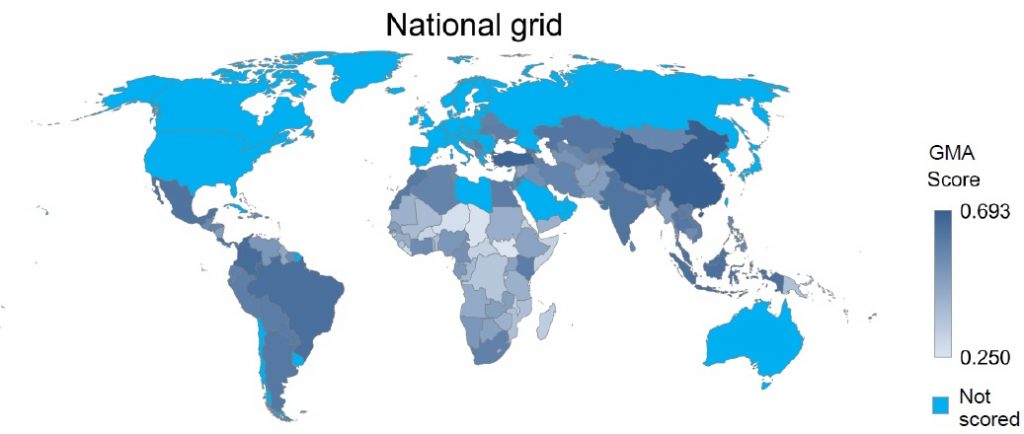
- Scale up of electric cooking is both viable and urgently needed in a number of countries. Countries with high GMA scores and large proportions of people already paying significant amounts for polluting fuels (such as kerosene and charcoal) are where a transition to electric cooking is most needed as well as being viable and affordable. This includes China, Malaysia, Thailand, Laos, Kenya, Myanmar, Philippines, Nigeria, Tanzania, Uganda and Rwanda. The scale of the opportunities for transition is particularly large in China and Nigeria, as both countries have high GMA scores and very large absolute numbers of people paying for polluting cooking fuels.
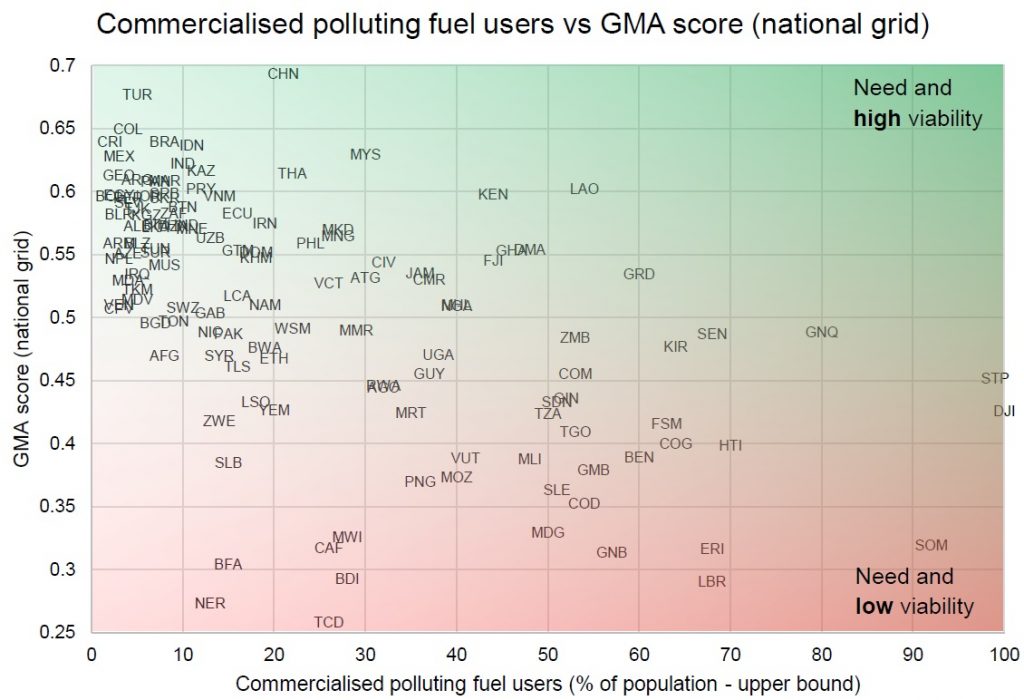
- Many countries have high GMA scores and the need to transition but ability to pay may be a challenge, as many people cook using cheap or freely gathered fuels (e.g. firewood, or waste from animals or crops). Countries with high GMA scores and many people cooking with these commonly collected fuels include China, India, Laos, Bangladesh, Nepal, Kenya, Myanmar, Afghanistan, Vietnam, Nigeria, Serbia, Uganda, Sri Lanka, Rwanda and the Philippines. These countries have large proportions of their populations in need of a transition but likely to have lower expenditures on cooking fuels and therefore less ability to pay for modern energy cooking services.
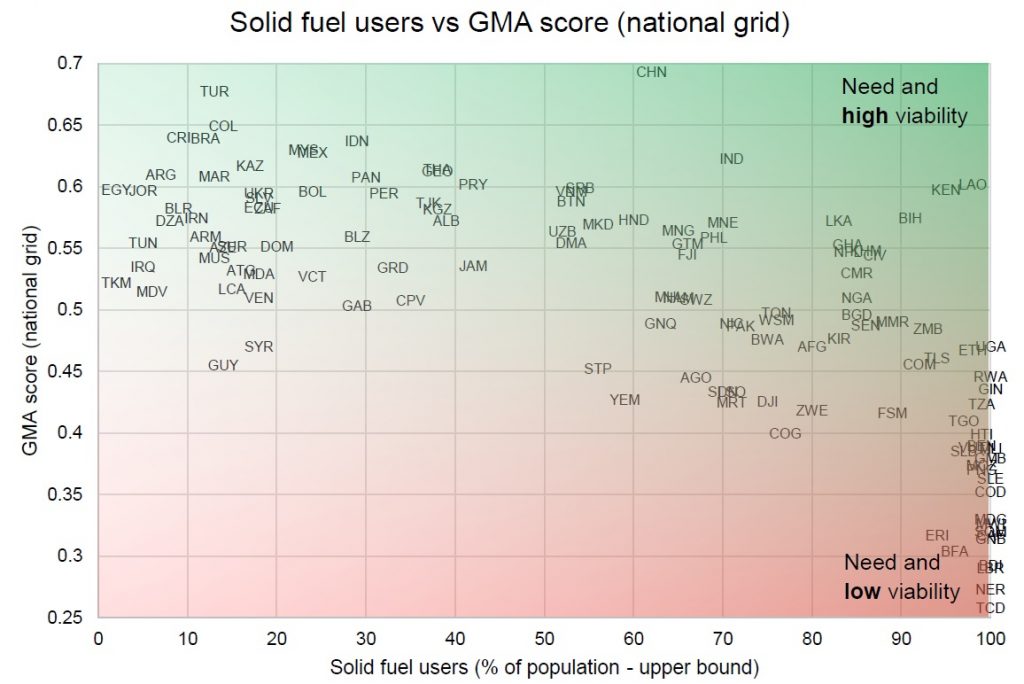
- In many cases a scale up of electric cooking on the national grid needs to be coupled with decarbonisation of generation infrastructure. Many high scoring countries have relatively low renewable energy shares and so, to ensure that the transition to electric cooking has the most positive impact in terms of reducing air pollution and CO2 emissions, need to decarbonise their generation infrastructure. Renewable electricity generation is already often cheaper than generation from fossil fuels and increased investment in this could further support the transition. On this basis, Kenya has a particularly strong potential for a transition to electric cooking, with high GMA score, 89% renewable grid electricity and high proportions of its population paying for polluting cooking fuels. On this basis, other countries with similar potential for transitioning to electric cooking include Laos, Honduras, Montenegro, Guatemala and Ghana.
Based on these findings and the challenges faced during the project, the report makes a number of recommendations:
- A national grid supported transition to electric cooking (particularly when transitioning from fossil fuels e.g. LPG) needs to be coupled with decarbonisation of electricity grids.
- Efforts to improve access, reliability and strength of national grid, mini-grid and off-grid electrical infrastructure must accelerate and integrate electric cooking where possible.
- Electrification needs to be coupled with accurate, up-to-date datasets on tier of access, cooking fuels and costs.
- More globally complete data is needed around other cooking fuels (e.g. cooking fuel prices for charcoal, LPG and kerosene) to provide comparison with electric cooking.
- Contextual understanding – food preferences, cooking practices, fuel/device stacking – is an essential component around which further work is needed to most effectively accelerate the scale up electric cooking.
- Expansion of data gathering around electric cooking for RISE and other policy and renewable energy indicators would improve opportunities.
The global context of the GMA report compliments recent MECS outputs presenting country-specific outlooks for scaling up electric cooking, such as those for Ghana, Nigeria and Cambodia. Guidance on financial pathways for catalysing clean cooking, such as business models of cookstove companies, investor types, pathways to technology scale-up and barriers to capital raising, is presented in the MECS – Energy 4 Impact Financing Clean Cooking series. The guidance is particularly relevant for stakeholders based in countries identified by the GMA as where the transition is both viable and urgently needed. Two further outputs to accompany the report will shortly be available via the MECS website:

Online GMA Visualisation Tool providing public access to the GMA data with the capability to manipulate and to display scores and rankings according to user needs.
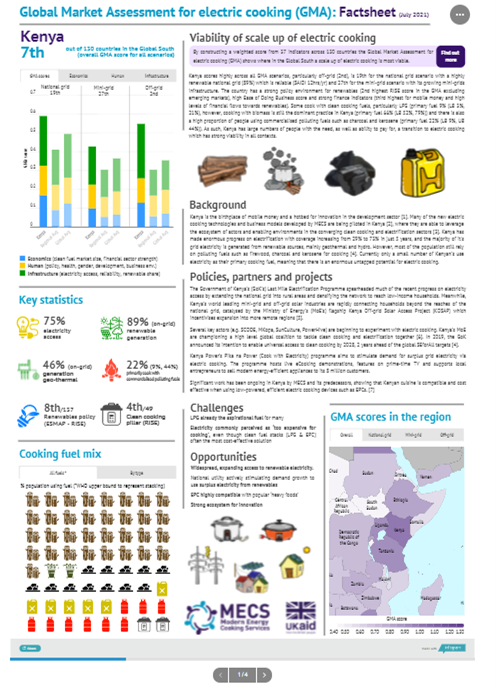
Factsheets detailing country-specific information as to the opportunities for, and barriers to, a scale up of electric cooking in a number of target countries.